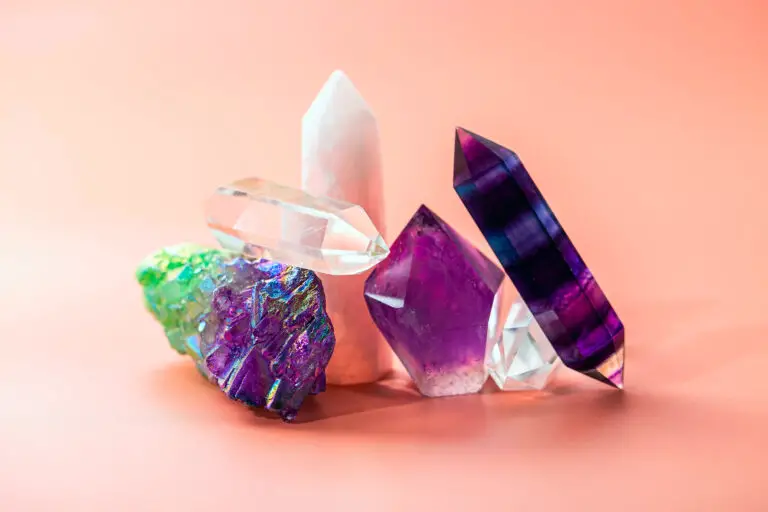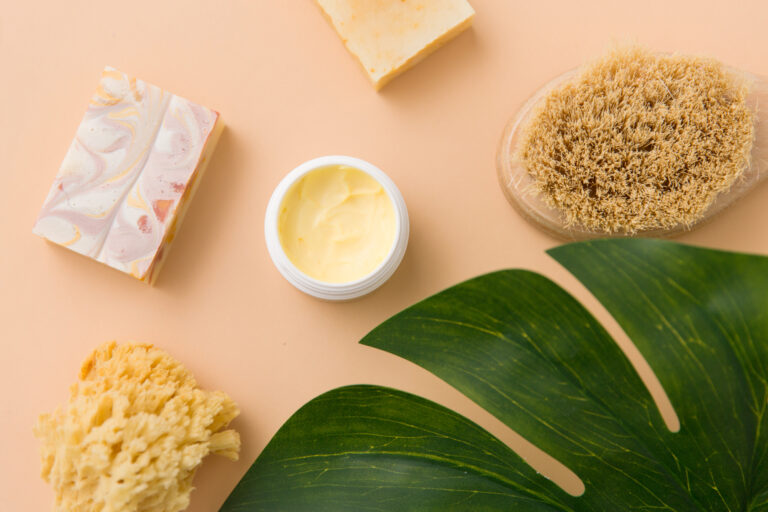How to Start a Bracelet Business? (7 Simple Steps)

Starting a bracelet business is an excellent idea because bracelets are a timeless product rather than a passing trend, meaning you’ll always have a market for your products.
Plus, the market for men’s jewelry is becoming more popular.
The key to a successful bracelet business is defining a niche and keeping your outgoing costs as low as possible when you first start.
- Identify a Niche Audience
- Find a Niche Product
- Define Sales Channels
- Identify the Minimum Budget
- Form a Legal Entity
- Set Up the Shop
- Reach First $1,000 in Sales
How to Start a Bracelet Business?
1. Identify a Niche Audience
A niche audience is a small, specialized audience with a particular set of interests. The more niche you go, the easier it is to market your products, and the less competition you have from other brands and companies.
Women aren’t a niche audience, because this covers a huge portion of the market. Women in their early 20s looking for environmentally conscious gold jewelry, on the other hand, is a niche.
Because there are fewer people in the niche audience, you’ll have a better chance of creating a product that appeals exactly to their needs and there will be fewer similar businesses to compete with.
Here are some examples of niche audiences:
Example niche audience: Millenial women who use organic cosmetics as a means of relaxation and are Instagram influencers.
Example niche audience: Health-conscious small dog owners whose dogs are picky eaters.
1.1 Analyze Bracelet Niche Communities
To start selling bracelets, find a handful of niche communities online and learn more about them from forums and websites.
In their online spaces, you’ll be able to find out more about the types of people who buy these niche products as well as real-world comments, problems, ideas, and gaps in the market.
The more you understand about your target market, the more you can create your products and adapt your marketing strategy to appeal to your audience. For example, if your niche is mothers, find out whether most of the people buying your products are first-time mothers, which might change their buying behavior.
This part of your business process is arguably the most important, as this will lead you to your valuable first sales.
Here are some examples of bracelet niche communities:
- https://www.reddit.com/r/friendshipbracelets/
- https://forum.spells8.com/t/crystal-bracelets-crafting/25622
- https://www.facebook.com/groups/288581488277771/
- https://www.facebook.com/groups/841545466272666/
- https://en-gb.facebook.com/groups/CREATIVEBEADCHAT/
- https://forum.purseblog.com/threads/recommendation-for-higher-end-bangle-bracelet-not-cartier-or-vca.998160/
- https://friendship-bracelets.net/forum
1.2 Find a Problem or a Market Gap
Find a problem that’s regularly experienced by bracelet lovers or owners or a gap in the market for people who want a particular type of bracelet that isn’t currently available.
To do this, look for online bracelet communities and talk to people who commonly wear bracelets to find out what problems they experience.
Before you open a bracelet shop, it’s important to know your customer’s ‘pain points’, meaning problems they face.
That way, you can design your products to solve these pain points and make a marketing plan to reflect this by highlighting your target audience’s problems and how your bracelets solve them.
You can even search related keywords online, such as ‘how can I find X bracelet’ or ‘I hate it when bracelets X.’
Potential Market Gap: Crystal bracelet made with ethically sourced crystals and gems.
Potential Problem: Chain bracelets get tangled easily when people leave them on the table.
Potential Market Gap: Delicate jewelry for men.
Potential Problem: My bracelet fades in the shower.
1.3 Formulate the Niche Audience
Once you’ve found your niche audience, tie all of your research together.
You need to establish which audience has which problem and why, and whether solutions already exist. If the solutions do exist, establish if you could find a more effective one. Then define your target audience around the problem or gap in the market.
For example, competitors might have solutions to the problem, but the solutions might be unfashionable or too expensive.
If that case, you’d need to find a solution to the problem that looks good or is more affordable. If a solution doesn’t exist, you’ll have to come up with one, and market it to your audience.
Here are some examples of niche audiences:
- Active women with minimalist style + they need bracelets that don’t move about during exercise
- Men looking for vegan leather bracelets + most of the existing leather bracelets are made with real leather
- Parents looking for charm bracelets for their young children + most of the charm bracelets on the market are for adults
- Environmentally-conscious affluent young women + they want bracelets made from sustainably-sourced metal
2. Find a Niche Product
So, you’ve established your audience, the problem, and the solution they’re looking for. You now have to create or find a product that will be the solution – a key step in starting a bracelet business.
If you’ve encountered a common problem, but the solution is not yet on the market, you may need to create a new concept. To do this, first, organize focus groups with the demographic you’re targeting.
Discuss the problem with them and ask how they’d like that problem to be solved in the form of a product. Find out ideas of how the product would look and work and ask them which marketing strategies would attract them to buy it. Here are some examples of potential niche products you could create.
Example niche product: Personalized bracelets that are engraved with your zodiac sun, moon, and rising sign. Perfect for women interested in the zodiac.
Example niche product: Bracelets with a clasp that can be changed e.g a butterfly clasp, flower clasp, and star clasp, perfect for women who want to change their style without buying a new product every time.
Example niche product: Bracelets for teenagers with a locket that contains a completely unique quote in every bracelet, encouraging friendship groups to buy one each and compare quotes.
2.1 Analyze the Competitors
Don’t let existing competition put you off from entering a market. The existence of competition means there’s money in the target audience you’ve chosen because people are buying those companies’ products.
Before opening a bracelets shop, research competitors and analyze what they’re doing and what’s working. Then, use these ideas in your business strategy with your own unique twist.
Let’s imagine you opt for the niche of tarnish-free bracelets, which are bracelets that don’t fade when you shower or sweat – perfect for active women or women in hot climates. Here are three popular competitors in that niche who would be targeting the same audience as you.
- Ellie Vail Jewelry – https://ellievailjewelry.com/collections/bracelets
- Hey Harper – https://uk.heyharpershop.com/collections/bracelet
- OXB – https://shopoxb.com/collections/bracelets-anklets
2.2 Unique Selling Proposition
A unique selling proposition (USP) is a crucial part of your business plan. Although you might have similar products to your competitors, a USP is what sets you apart – a unique part of your bracelet company that other businesses don’t have.
For example, if you create vegan leather handbags, your prices may be cheaper than your competitors’, making affordability your USP. Or, your USP might be that the lining of each bag is complete with a fabric print made by a female artist. The possibilities are endless.
Amazon’s one-click ordering, for example is a USP, as are Louboutin shoe’s red soles. Apple’s USP is an easy user experience, Walmart’s USP is its low prices, and Google’s USP is its accurate, tailored search results.
Here are the USPs of our three chosen competitors:
- Ellie Vail Jewelry: Ellie Vail has affordable prices and holds regular sales.
- Hey Harper: Hey Harper offers free shipping and free returns on all orders.
- OXB: the brand’s gold pieces last 10+ years and the metals are hypoallergenic.
2.3 Choose a Product
Now you’ll need to choose a product for your bracelet brand, using the process discussed. Establish your audience, the problem your product is solving, and how your product would differ from those of your competitors – your USP.
For example, active women who regularly visit the beach need water and sweat-proof jewelry. You can offer this and differentiate yourself from other brands by offering a unique metal, like rose gold, or offering a personalized shopping experience.
Spiritual women seeking crystal bracelets might struggle to find ethically-sourced crystals. You could create an ethically-sourced crystal bracelet business with the USP of shipping worldwide.
2.4 Find Suppliers
Once you’ve chosen a product, you’ll need to source bracelets to sell.
Depending on the niche you choose, there may already be some competitors on the market offering similar products. In that case, suppliers exist, so research those suppliers to find yours.
If you’re creating a brand new product, you’ll have to establish a manufacturing process for this and a way to source raw materials.
Before selecting a supplier, research reviews and testimonials to check the supplier is reliable to work with. Select one with close proximity, if possible, for ease.
Here are some handy links to help you find a supplier to source bracelets to sell:
- https://www.cheapwholesalejewelry.com/
- https://www.usjewelryhouse.com/
- https://www.wholesalesterling.com/
- https://www.wholesaleaccessorymarket.com/
- https://www.rubyimports.net/
Related: How to Start a Hat Business?
3. Define Sales Channels
So you’ve established what your product will be, but selling bracelets online also requires a sales channel – or multiple. A sales channel allows you to get your products in front of customers and give them a way to buy your products, so it’s one of the most crucial steps in setting up your business.
If you have friends with experience selling bracelets for a living or simply know somebody with an eCommerce store, contact them for advice on which sales channels are best. Alternatively, if you’re considering using an eCommerce platform or marketplace, look up online reviews to see what other business owners think.
- Your personal: Facebook friends, Instagram followers, colleagues, schoolmates
- Paid advertising: Google ads, Facebook ads, Tiktok ads, Twitter ads, Pinterest ads
- Marketplaces: Amazon, Etsy, Ebay
- Communities: Facebook groups, Reddit, Quora, forums
- Other: Blogging, Craigslist, promoting in the real world (e.g. schools, workplaces, malls)
4. Identify the Minimum Budget
There’s a common misconception that you need a lot of money to start a business, which puts many budding business people off starting. It simply isn’t true.
Instead, start small. Establish the minimum amount of money you’d need to invest in your bracelets small business to make $1000 of sales. Once you’ve made money and established a base of customers, banks are much more willing to lend you money.
To figure out how much you need to make $1000 of sales, work out the profit margin of your products and how many products you’d have to sell to make $1000. You’ll need the money it would take to buy those products and a basic marketing budget.
4.1 FFF and Personal Money
If you’re looking to open a bracelet shop but are unable to get funding from the bank due to a lack of previous experience, this financing method will work for you.
FFF stands for ‘friends, family, and fools’ and basically involves crowdfunding money from friends, family, and people with little experience in investing or local people interested in supporting your business.
This financing method is great because, unlike a bank loan, you won’t have to pay interest, and in some cases, people won’t even ask for a return on investment. This is one of the easiest ways to get into bracelets, but you’ll probably get less money than you would from other methods.
4.2 Bank Loans
Financing your bracelet shop with this method is best when you have some previous business experience, a reasonable amount of capital, or own an asset you can have as collateral.
The more you can prove that you’ll reliably be able to pay the loan back, the better chance you have of getting one. That’s why having previous experience can help your application.
Bear in mind that when you borrow money from the bank, you’ll typically have to pay it back with interest, which can be expensive. Before getting started, research banks to see which ones have the lowest interest rates and are more likely to lend money.
4.3 SBA Guaranteed Loans
An SBA loan is a loan guaranteed by the Small Business Administration. The SBA helps small businesses like a bracelet business online to gain funding by setting guidelines for loans and reducing the risk that the lender takes.
To get an SBA loan, visit the website and find the loan that best suits your needs, then enter your zip code to find a lender in your area. You’ll apply for the loan through that lender.
SBA loans have competitive rates and some loans even come with continued support to help you manage your new business. The down payments are generally lower and some loans don’t require collateral.
4.4 Government Grants
If you need money to fund your small bracelet businesses but don’t want to pay back a loan, you could try applying for a grant instead. Grants are certain amounts of money given to you, usually by the government. They don’t accrue interest, and you don’t have to pay them back.
The SBA provides grants (non-repayable) to specific small businesses. This grant, however, is only applicable to certain types of businesses, such as companies engaged in research and development, and nonprofit organizations.
To check if your business is eligible for a government grant and to apply, check the website, where you’ll find all the information you need.
4.5 Crowdfunding
This financing method typically involves asking for help from people you know, friends of friends, the local community and business owners. You can set up a crowdfunding page using a website like ‘GoFundMe’ and share it on social media.
Once you share it on social media, friends and family will be likely to share the page, sending it to an even wider audience. You can also email the crowdfunding link to everybody you know and ask them to forward it to their contacts.
Often, you’re not expected to pay back the people who fund you, so it’s cheaper to sell bracelets online with this method than a bank loan that accrues interest.
5. Form a Legal Entity
When starting a business, it’s absolutely crucial to make sure you follow all the rules and regulations and have the legalities in check. One of the best types of company to set up is a limited liability company, also known as an LLC.
An LLC offers your business liability protection as well as flexible taxation and ownership and management flexibility. LLCs also require less paperwork and they’re inexpensive and easy to form if you follow government guidelines.
One of the main reasons people like LLCs is that the LLC doesn’t have to pay federal corporate income tax, meaning bracelet online store owners with this business model can avoid double taxation.
5.1 Business Name
Your online bracelet business will need a memorable name for legal reasons and to help create your brand identity. For inspiration, look online at bracelet shop names and research the types of names similar businesses have.
Once you’ve got a few ideas for your business name, run them by a focus group filled with your target demographic. You’ll then get an idea of which business names will make customers more likely to buy from you.
Don’t panic too much about picking the perfect bracelet business names. If you don’t like the name after the first couple of months, you can always change it.
5.2 Choose a Business Structure
You don’t have to set your business up as an LLC if another type of business structure would work for you. The most common forms of business structure are sole proprietorship, partnership, corporation, S corporation, and LLC.
Here’s what all the business structures involve:
- LLC: A limited liability company is allowed by state statute, and the owners are called members. LLCs allow for flexible taxation.
- Sole proprietorship: A sole proprietor is someone who owns an unincorporated business by themselves.
- Partnership: A partnership is a relationship between two or more people who enter into business together.
- Corporation: In a corporation, prospective shareholders can exchange money or property in exchange for the corporation’s capital stock.
- S corporation: S corporations can pass corporate income, losses, credits, deductions, and losses through to their shareholders for federal tax purposes.
5.3 Register for Taxes (EIN)
No matter which type of business structure you opt for, you’ll need to pay tax on either the income you or the company make. If you’re worried about successfully registering for or filing your taxes, hire an accountant to help you with the process.
If you fail to pay your taxes, you could be hit with a fine or criminal charge from the government. Different states may have different tax systems, too, so check the tax regulations of the state you want to sell bracelets in.
You can register online to pay taxes on your business by using this link.
5.4 Bank Account & Credit Card
When you’re ready to start sending or receiving money as a business, it’s worth setting up a business account and corresponding credit card. Most banks offer business bank accounts, so get in touch with the most trusted bank account providers to ask about theirs.
The benefits to setting up a business bank account are personal liability protection and extra preparedness for funds if you find yourself short of cash at any point.
Most bank accounts come with an emergency line of credit if you need some extra cash to see you through a cashflow issue. Having a credit card also helps to create a credit history for your business.
5.5 Insurance & Accounting
It’s advisable for businesses to get insurance to avoid any legal challenges that may arise while the business is running. The types of insurance that businesses tend to need include a general liability policy, a business owner’s policy, a professional liability policy, and a tax liability policy.
Plenty of the biggest insurance firms offer these types of insurance (and more niche ones) for business owners to protect from legal issues arising. If you’re unsure which insurance firm to opt for, look up online reviews and testimonials. It’s worth asking for advice from other small business owners in the community so you can find the cheapest deals.
5.6 Permits & Licenses
Permits and licenses are needed for some businesses to run legally without breaking any rules or regulations at the state or federal level.
Because you’ll be selling jewelry, you shouldn’t need one of the federal business licenses that refers to businesses that prepare meat, manufacture drugs, or sell alcohol, tobacco, or firearms. You also won’t need the licenses or permits required for a physical store if you sell online.
There will, however, likely be some business permits or licences you need in your own state. To find out which business permits and licenses might apply to your company, look it up on your local government’s site.
6. Set Up the Shop
Now it’s time to set up the actual engine for your entire bracelets business, the website. You’ll need to establish how you’ll set up your online store and how you’ll upload your products to the website and then market them to your target audience.
Research eCommerce integrations and website creators such as Shopify to see which one fits your business the best. If you’re reluctant to spend money on a website in the first instance, start a bracelet business on Instagram and see how it goes.
This is also when you’ll define your brand and start to create graphics and choose how your store will look.
6.1 Define the Pricing
Although defining your pricing is a key step in bracelet shop online, don’t panic too much. You can always adjust your pricing as time goes on if you find it doesn’t work for your business.
You’ll need to set prices based on what price would give you a reasonable profit margin and also the type of ethos you want to present for your brand.
If you want your brand to be affordable, for example, you can set prices that give a smaller profit margin while hoping to sell enough products to make a reasonable amount of money. Set prices higher if you want to appeal to the luxury market.
6.2 Create an Online Store
Creating an online store is easier than people think, especially if you use an eCommerce platform like Shopify. Shopify allows you to create a store and then add integrations such as shipping apps or marketing apps to automate your processes and improve your reach. You can customize the store to perfectly fit your brand identity.
There are different pricing plans available for platforms like this, so if you want to sell bracelets online without spending much money in the first instance, you can opt for one of the cheaper price plans.
Then, as your business grows, you may want to spend more money and enjoy more advanced features such as segmentation and targeting.
6.3 Order Inventory
Now you’ve set up your bracelet dealer website, it’s time to order your inventory from your chosen suppliers. It’s better to order fewer products in the first instance in case they don’t sell as well as you’d hoped. To start with, we’d suggest buying $2000 in sales worth of inventory.
When you sell your first few products, keep an eye on how quickly they’re selling. This speed will let you know how many products you’ll need to buy for a similar period of time in the future.
Give the inventory a generous amount of time to arrive, so you don’t leave your product launch until the last minute.
7. Reach First $1,000 in Sales
The most important first step is making $1000 in sales, so the bank will be more likely to lend you money, and you’ll have some social proof like reviews or social media posts.
You’ll need to upload your products to your site and launch it, along with a marketing strategy. Marketing on social media is easy and free, so that’s a good place to start. Email everybody in your contact list to let them know your site is live and invite them to purchase a bracelet.
To get your first $1000 of sales, ask your friends and family to buy your bracelets, as well as handing out flyers locally and advertising on local social media groups or forums related to the niche you’re selling.






